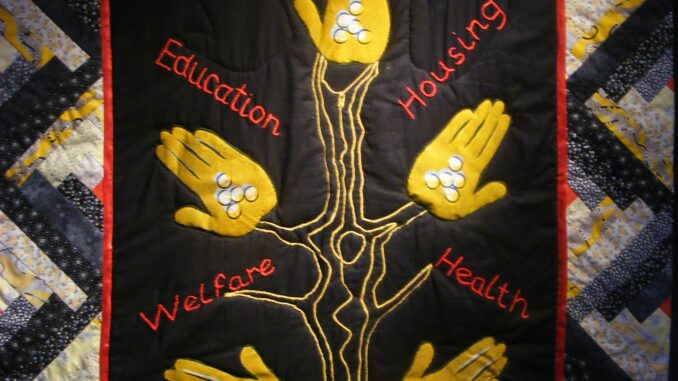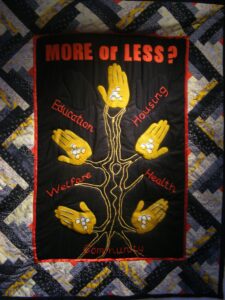
Memories of radicalism too often relegate it to the past. A collaborative exhibition between 198 Contemporary Arts and Learning and Brixton Artists Collective Archive (BACA) instead prove that a radical approach to memory can help us to better engage with the present.
The Brixton Art Gallery (BAG) was located at amongst the thriving Brixton Market on Atlantic Road from 1983 to 1988- a period and location which experienced some of the most acute social tensions of the Thatcher government. Amongst the turmoil, Brixton Artists Collective pioneered a platform for art and artists elsewhere excluded from practicing. In 2009, veterans of this project initiated an extensive protest against forgetting how the gallery contributed to social change in the local area, and demanded change to the prejudices within the UK’s artistic landscape.
The way in which BACA and 198 have decided to archive the activities of the Brixton Art Gallery, is not simply a linear narrative (although we do get to see a timeline of events), but a layered and plural set of experiences, which better reflect the many communities which used the space. From Womens’ Collectives, to Anti-Apartheid Craftwork; Afro-Caribbean Exhibitions to Queer Festivals; Black Lesbian discussion Groups and Polish Group Shows- the BAG practiced positive discrimination on every frontier. Many projects accepted relevant work from anyone who applied. BAG displayed over 50 exhibitions of the 5 years it was at Atlantic road, and nearly 1000 artists. Furthermore the gallery gave the first opportunity to turnerprize nominees Mona Hatoum, Cathy de Monchaux amd Zarina Hamid, and brought already established artists such as Rasheed Areen, Gavin Jantjes and Peter Kalkhof into the everyday lives of Brixton residents.
But Brixton Calling! is not just about documenting what happened at BAG in the 1980’s, it is about resuscitating those activities to face the some of the challenges which persist in today. A series of artistic responses to the archive are also included in the exhibition. These continue in the fashion of the BAG by reaching out to different communities, and provoking both those participating, and the audience to reconsider the relationship between arts and politics. Barby Asante explores Anti-Apartheid and creative activism with pupils of Burntwood School in ‘Looking Back… Moving Forward’, and Teri Bullen ran a series of quilting workshops with older women in Brixton, to produce ‘More of Less?’ responding to current issues of housing, education, health, and community in the style of the Zamani Sisters from Soweto. Nadia Attura’s portraiture project ‘Queer Pulse’ allowed photographers to engage directly with artists from the original queer shows at BAG, while Guy Burch’s installation ‘Fairy Tales’, recreates a scale model of the gallery lined with posters from its Gay an Lesbian exhibitions. The Postcard Project, lead by Rita Keegan, and ‘BAM-BAM’ fanzine created by Asante with members of Tate Collective, refer most explicitly to the activist practices of the gallery, and their motivating values of free content and open access.
Perhaps most inspiring is the Oral Histories documentary, led by Stefan Szczelkun, which guided eight young people to research, interview, film and record more than a dozen people originally involved in the BAC. The communication between a generation which remembers, and a generation which learns is crucial to understanding a dynamic of archiving often lost to filing cabinets and library basements. The documentary (on show and available on DVD) answers the question ‘what did they do then?’, but in return asks us ‘what are we going to do now?’.
Keegan says in her interview: “its not so much that we were overcoming barriers, instead we were just ignoring them”. This could perhaps be a maxim for arts practice today. Burch relates, that while then “we [LGBT] were detached and compartmentalized… it is now supposedly ‘not an issue’”. Prohibiting people from discussing current forms of discrimination by claiming it is no longer part of our society, is perhaps one of the most insidious forms of current bigotry.

There is a lot that can be learned from looking back to the Brixton Art Gallery. But this ‘Brixton Calling!’ is not us calling for the Brixton of the past: it is those members of the Brixton Art Collective calling us with the clarity and urgency that they voiced then. And regardless of whether you are from Brixton, London, the UK or anywhere else, their message still demands a response.

Leave a Reply